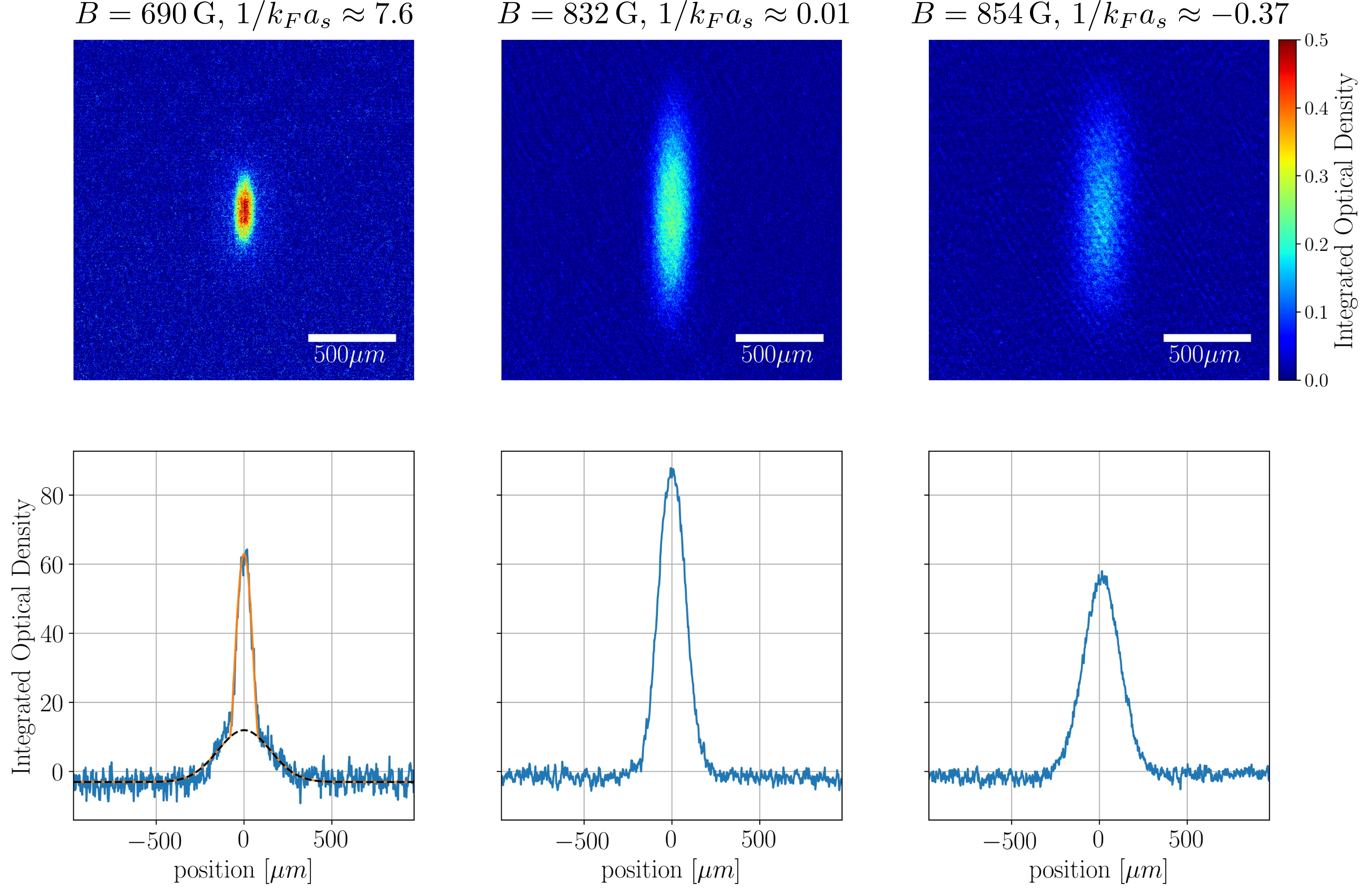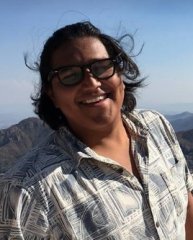

Ultracold Matter
At the Ultracold Matter Laboratory (LMU, by its acronym in Spanish) we have built a new experimental setup to produce and study ultracold atomic gases composed of lithium atoms. Specifically, we use the isotope 6Li , which is a fermion. This isotope exhibits a broad magnetic Feshbach resonance, which means that we can fully control de interatomic interactions employing an external magnetic field. This makes possible to access very different interaction regimes, from weakly to strongly interacting systems, from a repulsive to an attractive gas.
The control of interatomic interactions is of great interest since this allows the creation of atomic pairs of different natures, from strongly bound bosonic molecules to weakly coupled Cooper pairs. This allows the appearance of very different quantum states: while molecular pairs can give rise to Bose-Einstein condensation (BEC), Cooper pairs generate a state similar to that occurring in a superconductor, known as "BCS state". These states are connected through a strongly interacting regime known as the “BEC-BCS crossover”. One of the most interesting features of all these regimes is the occurrence of the phenomenon of superfluidity, a macroscopic quantum state in which gas can flow without any viscosity.
The understanding of the BEC-BCS crossover is currently a very relevant research topic in the area of quantum gases due to its close connection with other phenomena in condensed matter physics, such as high-temperature superconductivity. However, since it is a strongly interacting and strongly correlated regime, it presents very important challenges in its study, both from a theoretical and experimental perspective, hence the relevance of having a robust and versatile experimental system to explore it.

A powerful strategy to understand these systems is the production and study of collective excitations, since these are closely related to the microscopic properties of the superfluid. Thus, one of the main objectives of our laboratory is the study of the different collective excitations that can be generated in these systems.

Currently, we investigate a particular type of excitation known as "Faraday Waves" which consist of a spatially and temporally periodic pattern that is generated in the density of the fluid by perturbing it parametrically. This phenomenon is interesting due to the relationship it has with other phenomenologies, such as time crystals, or Floquet physics. Faraday waves can also be used as a tool to explore the microscopic properties of the gas, such as the spectrum of elementary excitations, or, as we have recently shown, to measure the speed of sound in the superfluid.


Publications
Articles
- Homemade open-source full-Stokes polarimeter based on division of amplitude - Optica Open Preprint
- Faraday waves in strongly interacting superfluids - New J. Phys. 23, 103038 (2021)
- Experimental setup for the production of ultracold Fermi superfluids of 6Li - Rev. Mex. Fís. 66, 388 (2020)
- Creation of optical speckle by randomizing a vortex-lattice - Optics Express 27, 4105 (2019)
- Connecting Dissipation and Phase Slips in a Josephson Junction between Fermionic Superfluids - Phys. Rev. Lett. 120, 025302 (2018)
- Global thermodynamics of confined inhomogeneous dilute gases: A semi-classical approach - AIP. Conf. Proc. 1950, 030006 (2018)
- Critical properties of weakly interacting Bose gases as modified by a harmonic confinement - J. Stat. Mech. 073101 (2017)
Theses
Master's Theses
- Diego Hernández Rajkov - (2021) Non-destructive and high resolution imaging techniques for studying ultracold quantum gases
- José Eduardo Padilla Castillo - (2021) Time-averaged optical potentials for trapping and manipulating ultracold quantum 6Li gases
Bachelor's Theses
- Mario César Uyoa López - (2024) Algoritmos para el análisis de imágenes de gases ultrafríos de 6Li
- Patricio Vargas Vélez - (2022) Objetivo de microscopio de alta resolución para diagnóstico y manipulación de sistemas ultrafríos
- Sebastián Alejandro Morales Ramírez - (2022) Diseño y construcción de un amplificador láser para la implementación de técnicas de enfriamiento para gases de 6-Li
- Andrés Gutiérrez Valdés - (2020) Estudio de transiciones hiperfinas en un gas cuántico de litio
- Diego Hernández Rajkov - (2018) Enfriamiento Doppler y sub-Doppler de un gas atómico de litio-6
- Eduardo Ibarra García Padilla - (2016) Diseño de los sistemas de ultra-alto vacío y de control para experimentos con gases cuánticos de litio
- Jesus Ernesto Carro Martínez - (2016) Diseño y proyección de trampas magnéticas y ópticas para experimentos de gases ultrafríos de litio
Infrastructure
In the Ultracold Matter Laboratory we produce and investigate quantum samples in a superfluid state composed of 6Li atoms at a temperature of the order of 10 nK. For this, there is an ultra-high vacuum system where the samples are produced, it is pumped by three ion pumps. Atoms are cooled and observed using laser light generated by diode lasers whose wavelength emission is 670.9 nm. Additionally, we count with atomic capture systems based on the production of magnetic and optical fields. The latter are generated with an ytterbium-doped fiber laser that emits a wavelength of 1070 nm. There is an additional laser system, based on amplifying diodes, which emits wavelengths of 532 nm and 1064 nm, which are used to make optical potentials with arbitrary geometries. The fine control of the wavelength of our lasers is performed using acousto-optic modulators operated with radiofrequency circuits at the order of hundreds of megahertz. The experiment is automated by means of an FPGA integrated circuit with a time resolution of 1 µs. Finally, we employ a low noise CCD camera to produce the images of the samples, this constitutes our main diagnostic instrument.
Collaborations
Members

Assitant professor
seman@fisica.unam.mx

CONACyT researcher
jacksonpc@fisica.unam.mx

Electronics and Instrumentation
carlos.gardea@fisica.unam.mx

PhD student

Master Student

Master Student

BSc Student

BSc Student

BSc Student

BSc Student
Former Members

BSc Student

BSc Student

BSc Student

BSc Student

BSc Student

BSc Student

BSc Student

Master Student

Master Student

BSc Student
BSc Student
BSc Student
Post-doctoral fellow









